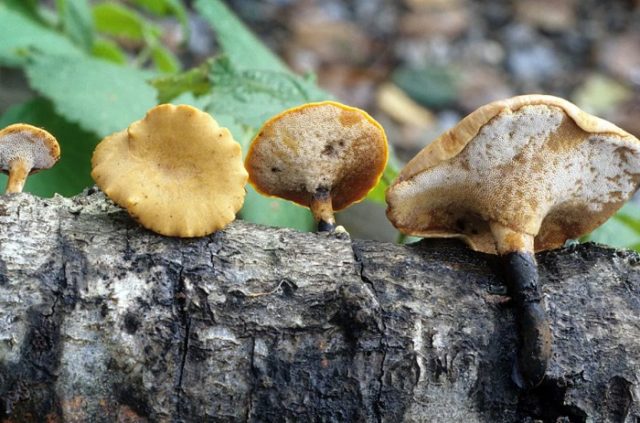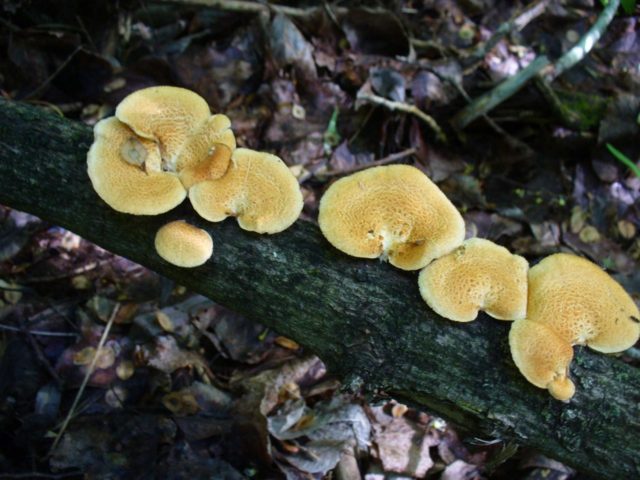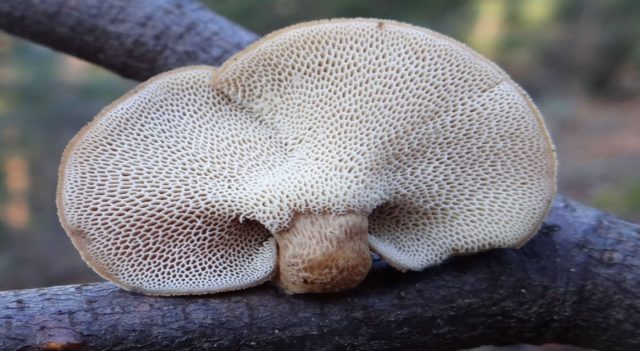Content
Polyporous polypore, aka polyporus pit, is a representative of the Polyporovye family, the genus Sawfoot. In addition to these names, it has others: polyporus or casket-shaped tinder fungus, decorated polyporus, vase-like tinder fungus, vaulted tinder fungus.
Description of pitted tinder fungus
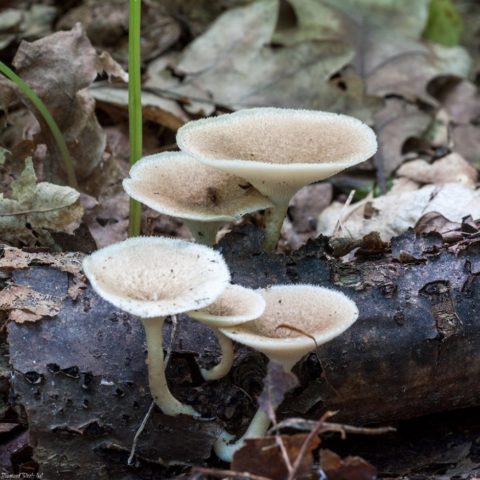
The mushroom has no pronounced taste
This specimen is a small fruiting body in the form of a cap and a leg. A distinctive feature is that the surface is covered with fine hairs and scales. Spore powder of cream color.
The spores are cylindrical, smooth. The flesh is white or cream colored, thin and rather tough. When ripe, the color remains unchanged. It emits a faint mushroom aroma. Some guides indicate that the smell is not pronounced.
Description of the hat
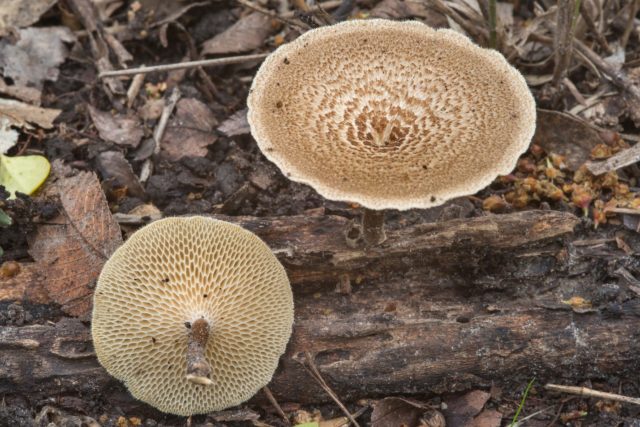
Poisonous tinderpop has no poisonous counterparts
The size of the cap varies from 1 to 4 cm, very rarely up to 8 cm. It is painted in brown shades. At the initial stage of ripening, it is convex, after which it acquires a flat shape or slightly depressed. The surface is dry, covered with small scales and hairs of a golden brown tone. The hymenophore is descending, porous, white at a young age, then gradually turns brown. The pores are radial, angular or hexagonal, with fine finely toothed margins, no more than 2 mm across.
Leg description
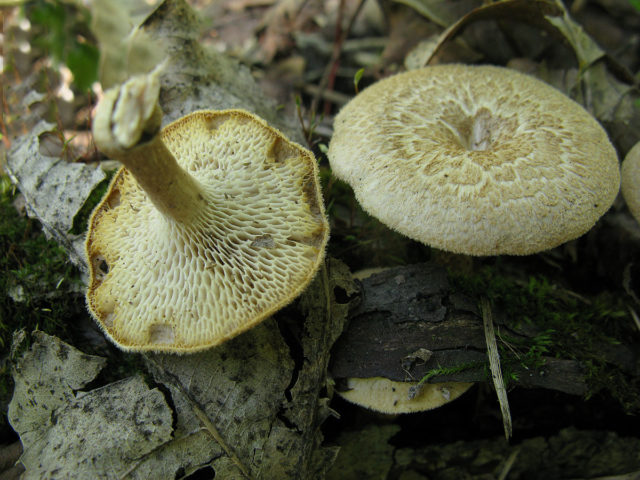
The leg can be positioned centrally or slightly shifted
Polyporus casket-shaped has a smooth, dry leg up to 6 cm long and up to 4 mm wide. The color may be the same as the hat or slightly different. In any case, its color varies from yellow to brown. The surface is covered with fine hairs and scales.
Where and how it grows
Pit polyporus is a fairly common variety that can be found almost anywhere in the world. It grows exclusively on hard trees, causing white rot. Active fruiting occurs in the spring and summer. Occurs both one at a time and in groups.
Is the mushroom edible or not
The mushroom belongs to the category of conditionally edible mushrooms. Some sources attribute this species to inedible due to its especially thin cap and stiff legs in adulthood. However, expert opinions agree that this specimen does not contain toxic substances. The species in question is known to be edible in Hong Kong, Nepal, New Guinea and Peru.
Doubles and their differences
Pit tinder fungus has external similarities with the following gifts of the forest:
- Tinder fungus - an inedible specimen. It is similar to the fungus under consideration by small fruiting bodies. So, the size of the double's cap is no more than 5 cm in diameter. However, you can distinguish a changeable tinder fungus from a pitted one by the smooth surface of the cap and the leg of a darker color.
- Cellular polypore - refers to inedible mushrooms. The fruit body has a fan-shaped, oval or semicircular shape. A distinctive feature is a barely noticeable leg, since its length is no more than 1 cm.
- Winter polypore - inedible. As a rule, the fruit body of the twin is slightly larger. In addition, the color of the fruit is much darker.
The use of pitted tinder fungus
As you know, many tinder fungi are used in homeopathy and for the manufacture of dietary supplements. This number includes this type of mushroom.
Conclusion
Tinder fungus is a small mushroom that can be found on trees in deciduous or mixed forests. As for edibility, this is a rather controversial issue: some reference books attribute to it the category of conditionally edible mushrooms, others - inedible. However, judging by the small size of the fruit bodies and the unexpressed taste, it should be assumed that this species has no nutritional value.
